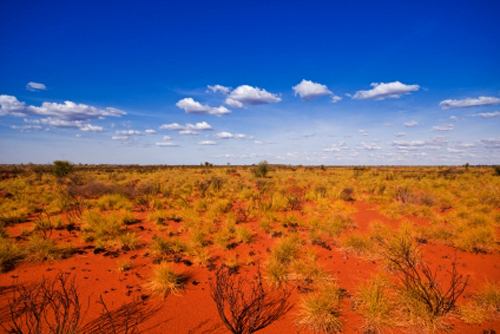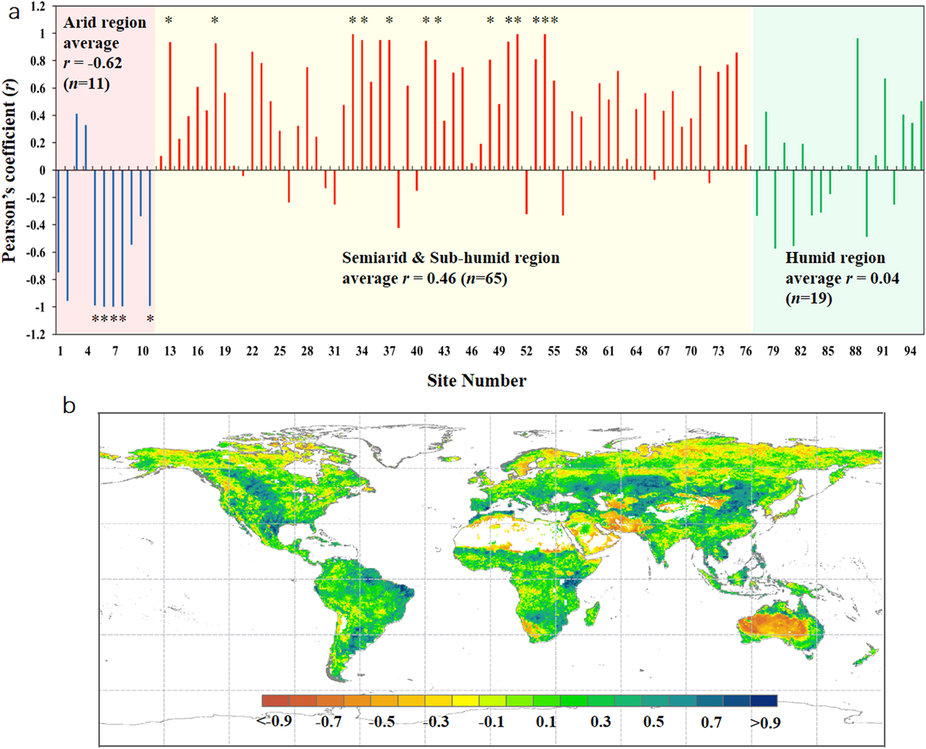Only arid vegetation becomes more water efficient during drought

Varying bio-climatic zones respond differently to changes in hydro-climatic conditions, but a new study, led by Dr Yuting Yang, shows that only arid zones increase their ecosystem water use efficiency (WUE) during drought (image below).
“WUE links the coupled carbon and water cycles and is a key variable to understand the response of ecosystem productivity to water availability.” said the authors.

(a) Pearson’s coefficient between annual WUE and wetness index for each flux site. (*) indicates the regression is significant at the significance level of 90% (not at 95% due to a limited number of years at each site), and (b) Spatial distribution of Pearson’s coefficient (r) between detrended annual MTE-WUE and detrended annual PDSI series. Dashed grey lines are separated by 30° latitude or longitude from the equator and 0° E (as in all maps). Map was created using ArcMap 10.2 (http://www.esri.com/software/arcgis/arcgis-for-desktop).
Recent work by Ponce Campos et al. (2013) reported that ecosystem WUE increases in drought years uniformly across bioclimatic zones. This work was based on remote sensing vegetation index data at nearly 30 sites in America and Australia covering a wide range of annual precipitation.
In this recent study, however, the researchers used two observational WUE datasets, (1) the eddy-covariance measurements at 95 sites and (2) a global gridded dataset synthesized based on existing observation and a data-adaptive machine learning approach, to show that increasing WUE in drought years only occurs in the arid climate zone.
“In the semi-arid and sub-humid climates, ecosystem WUE decreases in droughts. WUE is insensitive to droughts in the humid climate zone.” said the authors.
The reason put forward to explain this observation is that WUE variability in arid ecosystems is primarily controlled by evaporation, with a higher proportion of water lost by evaporation in wet years. On the other hand, in semi-arid/sub-humid regions, WUE is mostly regulated by biological processes (i.e., rapid response of grassland to wet events).
According to the authors, the difference in results found in this study and that of Ponce Campos et al. (2013) suggests more research is needed to improve our mechanistic understanding of the ecosystem responses to droughts.
Article: ‘Contrasting responses of water use efficiency to drought across global terrestrial ecosystems’, Yuting Yang, Huade Guan, Okke Batelaan, Tim McVicar, Di Long, Shilong Piao, Wei Liang, Bing Liu, Zhao Jin and Craig Simmons, Scientific Reports, doi: 10.1038/srep23284
